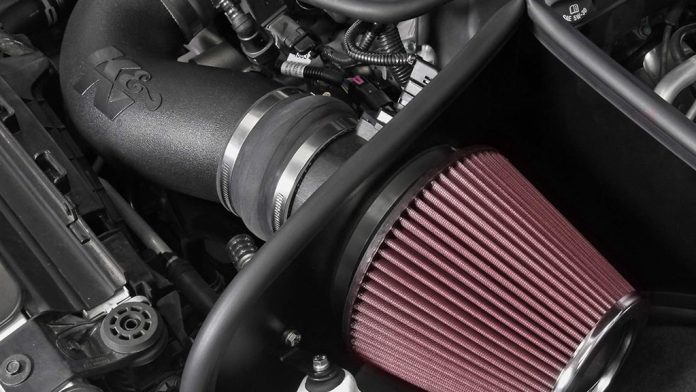In the world of automotive enthusiasts, fine-tuning a car’s performance is an art form. From boosting horsepower and torque to improving fuel efficiency, numerous aspects should be considered when enhancing your vehicle’s overall performance.
One critical component in this process is the air intake system. Here, we delve into the role of air intake systems in engine performance tuning and explore how they can be seamlessly integrated into a broader strategy for optimizing your car’s power and efficiency.
The Crucial Role of Air Intake Systems
First, though, let’s understand the fundamental role of an air intake system in your vehicle. The primary function of this system is to deliver a precise amount of clean air to the engine’s combustion chamber. This air, combined with fuel, undergoes combustion to generate power.
The air intake system plays a critical role in achieving the correct air-fuel mixture. This mixture’s precision is essential for combustion efficiency and power generation. By modifying or upgrading the air intake system, enthusiasts can enhance the quantity and quality of air delivered to the engine, resulting in improved performance.
Integrating Air Intake Systems into Performance Tuning
Now, let’s explore how air intake systems fit into the broader strategy of engine performance tuning.
Increased Airflow for More Power
One of the primary objectives of engine performance tuning is to increase the power output of your vehicle. By upgrading your car’s air intake system, you can significantly improve airflow to the engine. Performance air intake systems are designed to reduce restrictions and provide a more direct path for air, allowing the engine to breathe more freely.
This increased airflow enables the engine to burn more fuel efficiently, leading to higher horsepower and torque figures. For enthusiasts seeking more power from their vehicles, upgrading the air intake system is often one of the first steps in the tuning process.
Enhanced Throttle Response
Throttle response is the measure of how quickly your car’s engine reacts to your throttle inputs. A sluggish response can be frustrating, especially in performance-oriented driving scenarios. Upgrading the air intake system can help enhance throttle response.
Performance air intake systems are designed to reduce lag by allowing a more immediate flow of air into the engine. This means that when you press the accelerator pedal, your car responds more swiftly, providing a more engaging and agile driving experience.
Improved Fuel Efficiency
Performance tuning isn’t solely about increasing power; it can also focus on improving fuel efficiency. While this may seem counterintuitive, a well-designed aftermarket air intake system can actually enhance fuel efficiency.
By providing a more efficient and controlled flow of air, these systems can optimize the air-fuel mixture, ensuring that the engine burns fuel more effectively. This, in turn, can lead to better fuel economy, particularly during highway cruising and moderate driving conditions.
Sound Enhancement
For many automotive enthusiasts, the auditory experience of driving is just as important as performance gains. Aftermarket air intake systems often produce a more aggressive engine sound, adding an exhilarating auditory element to your driving experience. This enhanced engine note can be a source of pure enjoyment for those who appreciate the sportier side of motoring.
Customization and Personalization
Engine performance tuning is a highly customizable process, and air intake systems are no exception. Enthusiasts can choose from a wide range of aftermarket air intake systems, each with its design, materials, and filter options. This customization allows you to tailor your vehicle’s performance and aesthetics to your specific preferences.

Buying an Air Intake System
When considering the purchase of an air intake system for performance tuning, there are several factors to keep in mind. For example, ensure your air intake system is compatible with your car’s make and model. Many manufacturers offer systems designed specifically for various vehicles.
Consider the materials used in the construction of the intake system, too. Common options include plastic, aluminum, and carbon fiber. Each material has its benefits in terms of weight, heat resistance, and aesthetics. Next, evaluate the type of air filter included with the system. Options include cotton-gauze, foam, synthetic, and oiled or dry filters. The filter type can impact filtration efficiency and maintenance requirements.
Be aware that modifying your air intake system may impact your vehicle’s warranty. You should, therefore, consult your manufacturer’s warranty terms and consider how aftermarket modifications may affect your coverage. It’s also wise to research different air intake systems thoroughly. Read user reviews, seek recommendations from fellow enthusiasts, and consult automotive forums to gather insights into specific brands and models. You’ll find many great options for sale online, such as the WeaponR air intake systems.
Plus, keep in mind that engine performance tuning involves more than just upgrading the air intake system. It often includes other modifications such as exhaust enhancements, ECU (engine control unit) tuning, and suspension adjustments. Think about your long-term tuning goals and create a comprehensive plan to suit them.
Your car’s air intake system is a pivotal component in the pursuit of optimal engine performance. Upgrading to a performance-oriented air intake system can unlock additional power, improve throttle response, and even enhance fuel efficiency.
Pictured Top: K&N 69-8605TS Performance Air Intake System with Yellow Air Filter Wrap. Available at Amazon



